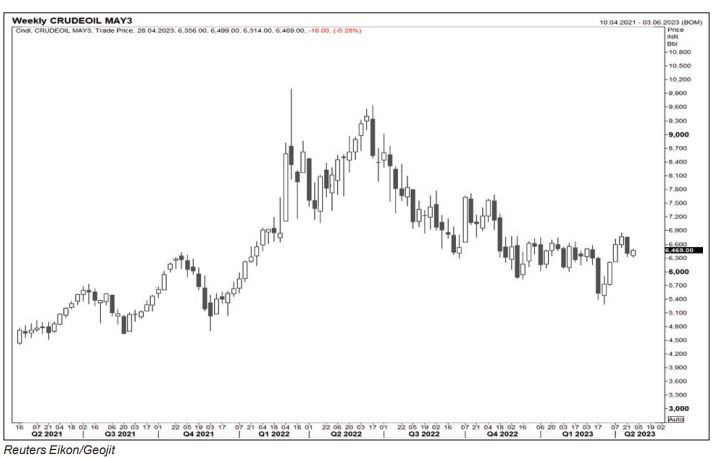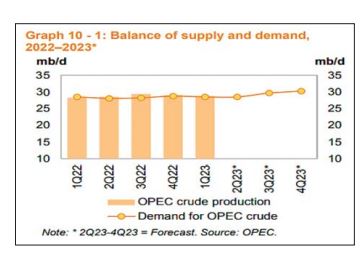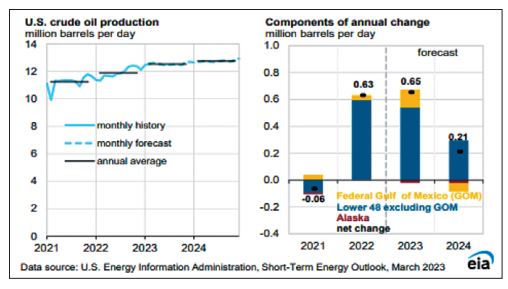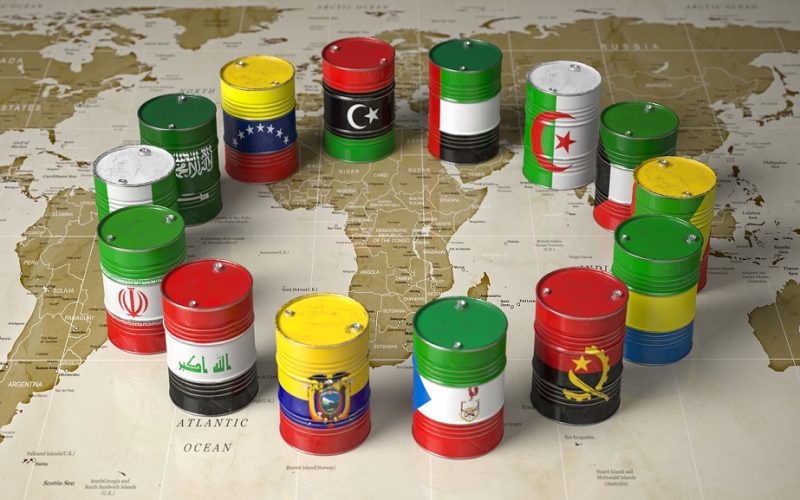Oil prices spiked to a one-month high recently following the surprise announcement of Organization of the Petroleum Exporting Countries and its allies (OPEC+) to slash their production. Despite a quick recovery from the two-year low prices reached last month, demand worries have kept the commodity under pressure.

Reuters Eikon/Geojit
Saudi Arabia and its oil-producing allies including Russia shocked global oil markets in the first week of April by announcing a combined production cut of more than 1.2 million barrels per day. The cuts, set to start in May, are expected to last until the end of the year. This is an apparent move by key oil-producing countries to increase global oil prices which have been adversely hit due to moderate demand amid worries of a global recession.
Russia and Saudi Arabia announced they would each slash production by 5,00,000 barrels per day and followed by Iraq, UAE, and Kuwait cutting 2,11,000, 1,44,000 and 1,28,000 barrels per day. There were reports that Russia is struggling to keep up production without the benefit of Western services companies that have wound down their operation since the Russia-Ukraine war. Saudi Arabian production is also running below its production quota set by OPEC countries in recent months.
Crude oil MCX Futures

Reuters Eikon/Geojit
Earlier, in response to the pandemic-induced demand shock, the OPEC+ agreed to production cuts to support prices. Since October last year, the group decided to reduce global production by 2 million barrels per day. The group has gradually increased production since then, but recently, they decided to maintain their production cuts until the end of 2023 to prevent oversupply.
However, this move caught the world’s oil markets off guard as they had earlier hinted that they did not intend to make changes in their production policies. While the announcement made some sharp upticks in global oil prices, its impact may be limited as the world economy is now going through a challenging period.
Oil prices are currently a third below where they were immediately after the Russian invasion of Ukraine in February 2022. OPEC+ is currently responding to growing fears of a recession in the wake of the failure of key banks in America and Europe and aggressive rate hikes of central banks to tame inflation.
Despite several geopolitical factors affecting its fundamentals, global oil prices have been congested inside $83-70 per barrel since last November. The G7 countries and the European Union had set a price cap on Russian oil at $60 a barrel. By taking this action, they hoped to reduce Russia’s profits from fossil fuels without interfering with the world’s crude oil supply.
Amid fears of a feeble global demand, the G7-led price cap on Russian oil and Moscow’s plan for a drastic production cut had negligible impact on prices. The output cut by OPEC is anticipated to cause disruptions in the global energy supply chain, but the slowing global economy reduces the thirst for oil.

Major rallies in the commodity may be halted by rising inventory levels in the world’s top producer, the US. The US is one of the largest oil-producing countries in the world, with a significant impact on the global oil market. Due to its influence on both domestic and global economies, industry experts and policymakers have been closely monitoring the country’s crude oil production and inventory levels.
In recent years, the US has experienced a significant increase in crude oil production due to the growth of shale oil and gas production. However, the Covid-19 pandemic and the subsequent decline in demand for oil products have had a significant impact on US crude oil production. It is anticipated that US crude oil production and inventory levels would continue to rise in the upcoming years if the global oil market recovers.

At the same time, demand from emerging markets may offer support to prices in medium to long term. Emerging markets have experienced a significant increase in crude oil demand over the past decade due to rapid industrialization and economic growth. The demand for crude oil from emerging markets is expected to continue rising if these economies further develop.
Significant changes in prices are less likely in the near future because the present supply-demand dynamics of crude oil now stay balanced. Prices are still under downward pressure due to the unpredictability of Chinese demand, a potential global economic slowdown, a build-up in inventories, and a possible surge in US output. The recent OPEC+ output cut, and a possible shortage of Russian barrels may tighten the supply outlook, which might provide some support to the world crude oil market.







